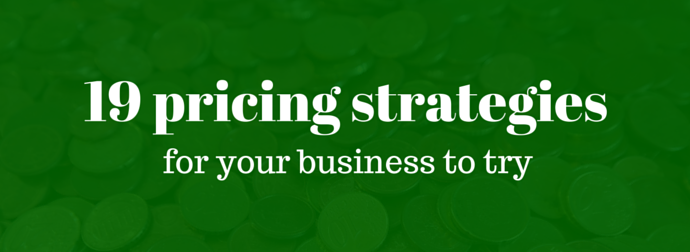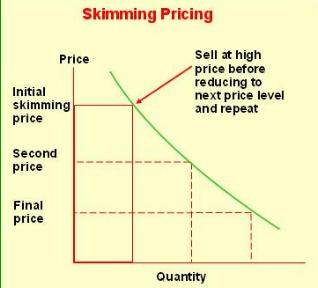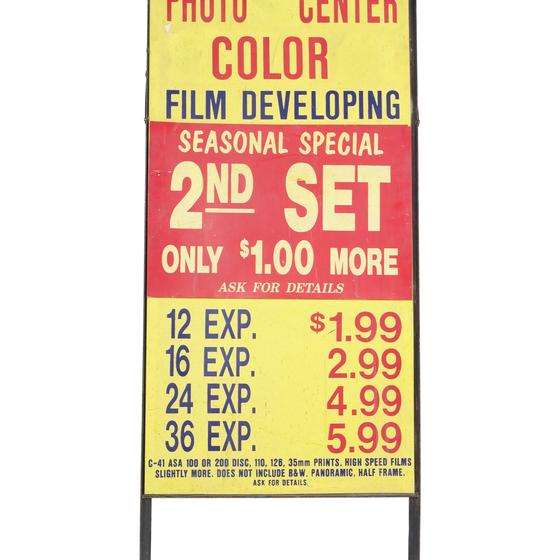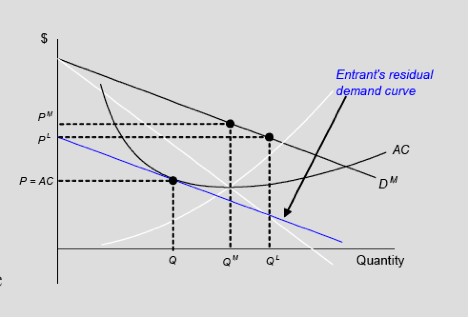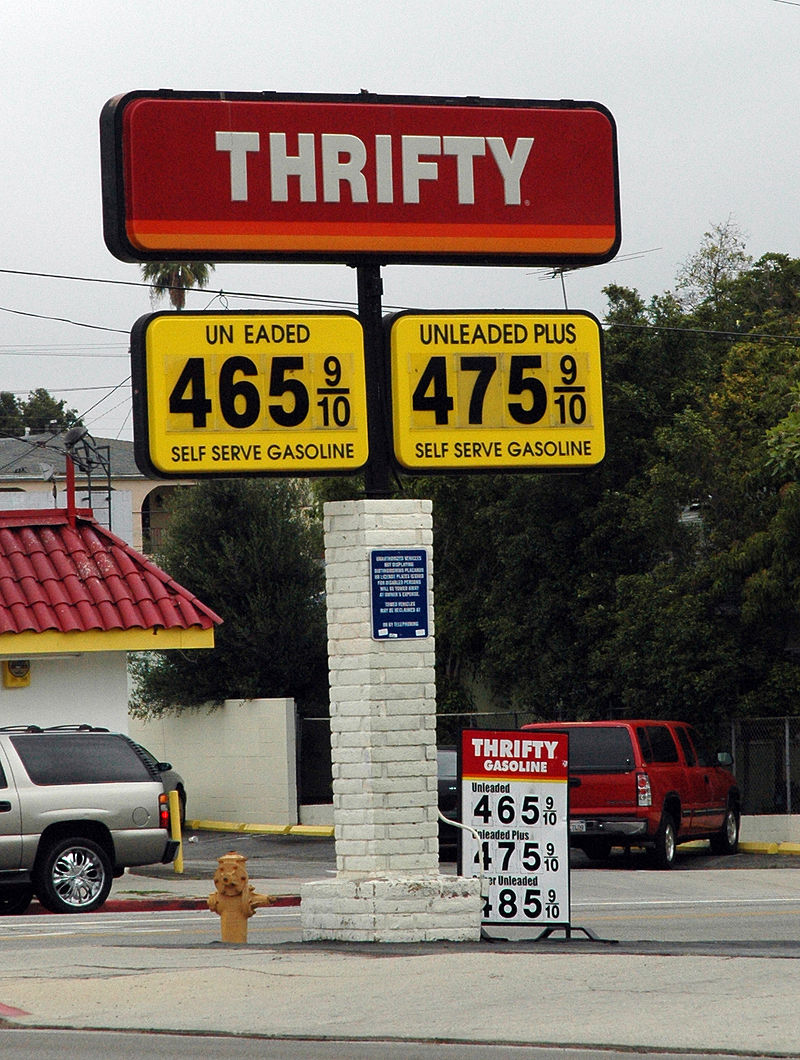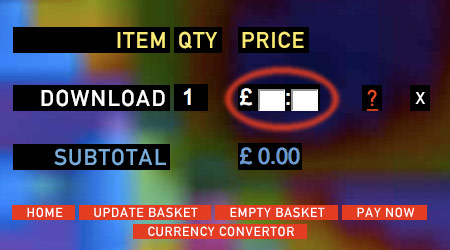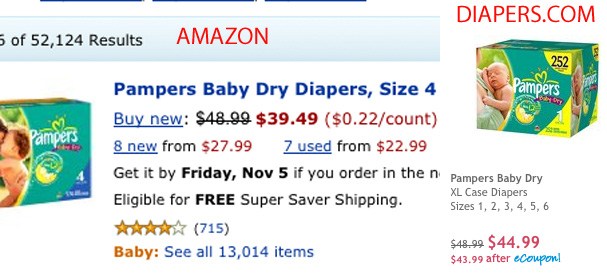-
 11 min. read
11 min. read
-
 Trevin Shirey
Trevin Shirey VP of Marketing
VP of Marketing
- Trevin serves as the VP of Marketing at WebFX. He has worked on over 450 marketing campaigns and has been building websites for over 25 years. His work has been featured by Search Engine Land, USA Today, Fast Company and Inc.
Have you ever wondered why iPhones cost a few hundred bucks more than other smartphones? Or how free-to-play games bring in the bacon for their creators?
As consumers, we often look at prices with an eye for the best deal. On the flip side, businesses and marketers strive to lead consumers down a path to their own best deal.
And while pricing might seem as simple as slapping on a price tag, there are dozens of pricing strategies at work today.
Here are 19 different pricing strategies that all have different ways of attracting consumers and helping businesses turn a profit.
1. Absorption Pricing
Absorption pricing rests upon a simple equation to determine optimal product pricing.
In absorption pricing, businesses make sure they recover their variable costs and fixed costs. To arrive at the price in this scenario, businesses can add the cost per unit plus the overhead costs and divide that sum by the total number of items made.
Variable cost per unit + ((Total overhead + administrative expenses)/Number of units produced)
That’s how you arrive at the price you need to charge to break even, so many businesses will use this is a base price and offer premium options.
2. Contribution Margin-Based Pricing
How much return are you getting on a product?
In contribution margin-based pricing, businesses take the revenue they generate from a product and subtract the product’s variable costs from that number. They then divide the difference by the revenue to determine a ratio of what percentage of money they’re getting.
It’s up to a business owner to determine what that margin should be.
In this model, profit is maximized based on what we set the contributing margin to. This type of thinking allows business to essentially “select” their profit, yet suffers from the drawbacks of overvaluing one’s products.
3. Creaming or Skimming
If you price your products high enough, you won’t have to sell many to generate a sizeable return. In this pricing strategy, businesses make sure they put a high enough price tag on their products so that they’ll make a good chunk a change if just a few customers buy their products. In other words, they sacrifice the high volume of sales they could get by pricing more competitively.
They’ll make a profit if the right number of customers support their brand, even if that number is relatively small.
This strategy is commonly used to target early adopters – those who buy a product when it is first released.
4. Decoy Pricing
Let’s say you’re in the business of selling shampoo, and your brand produces three different varieties of shampoo. With decoy pricing, you could price two of the bottles of shampoo expensively and the third bottle rather inexpensively. This tactic is meant to make consumers think they are getting a good deal on shampoo — when in fact, the price is what it is because the two competitors are intentionally more expensive.
5. Freemium
In order for people to like your product and use it, you’ve got to generate some exposure. More and more, we’re seeing the rise of “freemium” pricing strategies where businesses give out their products and software for free in an effort to get people to pony up and spend the money to get a premium version.
Look no further than the number one free-to-play computer game, League of Legends, which earned $624 million in 2014 solely from micro-transactions within the game.
Think about all the free-to-play apps you can download on your phone but have a poor user-experience due to advertisements. Want to get rid of those ads? Well, now that you’ve gotten a taste of the game for free, you can pay $1 to have an ad-free experience.
The same tactics are widely used across software, where we get limited free-trial offers to give us a taste. Once they time out, we might lobby our bosses to invest in the software.
6. High-Low Pricing
Sometimes, there is a perceived value in items that are priced higher than their substitutes. In high-low pricing strategies, businesses price their items higher than those of their competitors but offer comprehensive couponing and discounts if certain terms and conditions are met. That way, customers think they are getting a deal.
7. Limit Pricing
Though this strategy is illegal in many countries, many businesses use limit pricing in situations that are monopolistic. These businesses will price things in such a way that discourages competitors from entering the market because there is not much money to be made. You could argue that when Amazon priced its diapers aggressively in order to try and force Diapers.com to sell, the company engaged in an iteration of limit pricing.
Limit pricing essentially controls the market to a point where new entrants (potential competitors) struggle to increase demand.
This tactic can also be subtle and have a ripple effect on consumers, where we see a new competitor and think, “Really?! $50 for this? I’ll just buy from the other brand for $30.”
8. Loss Leader
Sometimes, companies price their products at cost or even below cost in order to stimulate sales of another product altogether. For example, let’s say a company makes printers and printer ink. By pricing their printers very cheaply – even taking a loss on those sales – the manufacturer might be making a play to try and get customers to buy their printer ink.
If someone buys a printer, they’re going to need to buy ink. By making the initial investment cheap, they are basically hedging their bets and banking on customers eventually coming back to buy the supplies to keep it running.
9. Marginal-Cost Pricing
The marginal-cost pricing strategy allows businesses to focus on precisely how much money it costs to produce an extra unit of output. Let’s say a product has a marginal cost of $9, and the company decides to sell the product at $11, realizing a $2 profit on the good. This strategy borrows from the practice of loss leader pricing, but in a more calculated manner.
Marginal-cost pricing focuses on steadily adding to profits by tapping price-sensitive consumers. It also empowers a market for accessory-pricing, such as selling razors for their marginal cost, and then selling packs of the blades for a larger profit.
10. Market-Oriented Pricing
If you’re selling the same product as your competitors, why shouldn’t you sell it at a comparable price? If you head into a liquor store, you might notice that a variety of the beers made sell for, let’s say, $9.99 a six pack. Isn’t it strange that all of these companies would produce beer at the same cost and have all the same other expenses?
The fact of the matter remains that it likely costs each business a different amount of money to produce a similar product. In market-oriented pricing, businesses set their prices mindful of their competitors, maintaining relative consistency across the market. This is a widely celebrated tactic within the budding craft beer industry.
11. Odd Pricing
Even though it’s only pennies less, we much prefer spending $14.99 or $14.87 on an item than $15. When businesses utilize odd pricing strategies, they are playing into the psychology of the human mind.
Even if we know for a fact that we don’t stand to save that much money by buying something at that price, we still feel very comfortable making that kind of purchase. Businesses such as gas stations and big shopping centers use odd pricing strategies on a daily basis.
These seemingly random numbers convince customers that they are getting a some type of deal, and allow businesses to stay competitive while creating a sense of savings in the buyer’s mind.
12. Pay What You Want
If you could attach your own price tag to everything you bought, why wouldn’t you? In the pay what you want pricing strategy, customers are allowed to determine how much money they are willing to spend on each product. In some cases, that number might be zero.
In 2007, Radiohead released their album “In Rainbows” via this method.
According to the band, this method was successful, selling 3 million units.
13. Penetration Pricing
Customers can be hesitant to try new products. As a business owner, sometimes you have so much confidence in your product that all you need to do to be successful is have your customers give it a whirl. With penetration pricing, businesses price their products at aggressive rates to get customers to stick their proverbial toes in the door.
Once they are comfortable with your product and have grown accustomed to it, you can then raise rates a little bit and realize profits that way.
Online, the first time we visit a website we might see a banner that screens “20% off your first order!” or “Get free shipping when you spend more than $10!” These marketing tactics compliment the penetration pricing model to help segue new visitors into paying customers.
14. Predatory Pricing
Though the tactic is illegal in some countries, predatory pricing is the process by which a company drastically undersells its competitors, conceivably trying to knock them out of business. As aforementioned, when Amazon wanted to buy Diapers.com, the retailer sold diapers for such a low price after the diaper seller didn’t want to sell.
That way, Amazon undercut their competition, and Diapers.com was forced to have to sell their business even though they didn’t want to.
15. Premium Decoy Pricing
Let’s say you’re the maker of two kinds of t-shirts. With premium decoy pricing, you will set the price of one of them significantly higher than the other. This will convince customers that they are getting a great deal when they decide to buy the lower-priced item.
On the other hand, they also might be attracted to the higher-priced item, thinking that they are getting a good deal on a superior product.
16. Premium Pricing
What can you say? Sometimes we like expensive toys. Some companies will try out the practice of premium pricing, setting the prices of their items significantly higher than that of their competitors.
In doing so, customers can assume that more expensive products are representing a higher quality.
While it’s likely that some car manufacturers like Porsche spend more money on the products, care and engineering that go into the design of their vehicles, at the end of the day, customers are certainly paying a noticeable chunk of money on the brand name itself.
17. Price Discrimination
Not every market is the same. Some businesses will use price discrimination pricing strategies where they sell the same product to different people at different prices. For example, a soft drink manufacturer might sell one bottle of their product for $3 in more expensive areas of the country while selling the same exact product in poorer areas of the country for $1. In both cases, the price is respective to the market and upholds a level of consistency to some degree.
18. Price Leadership
If you have a dominant share of the market, you can set define the way things are priced in some scenarios. For example, if a cell phone provider decided all of a sudden that they were able to charge $9.99 a month for an unlimited plan, their competitors would soon have to follow suit lest they risk losing all of their customers. If one mega player can price something that affordably, you have to wonder why the others wouldn’t be able to.
19. Mixed Pricing Strategies
Online, we have more freedom to experiment with different pricing strategies.
In the example above, we see a mix of incentivized pricing next to a freemium model. If users are not ready to commit to a monthly or discounted yearly package, they can sign up for free and make the choice at a later date. By mixing strategies, we give users more flexibility while increasing our chances of converting visitors into long-term customers.
These pricing strategies all have their strengths, and it can be difficult to determine which one is right for your busienss. Choosing the right strategy – or mix of strategies – involves heavily testing markets and consumers.
Does your business use one of the strategies above?
Or have you had success with something entirely different? Feel free to let me know in the comments below!
-
 Trevin serves as the VP of Marketing at WebFX. He has worked on over 450 marketing campaigns and has been building websites for over 25 years. His work has been featured by Search Engine Land, USA Today, Fast Company and Inc.
Trevin serves as the VP of Marketing at WebFX. He has worked on over 450 marketing campaigns and has been building websites for over 25 years. His work has been featured by Search Engine Land, USA Today, Fast Company and Inc. -

WebFX is a full-service marketing agency with 1,100+ client reviews and a 4.9-star rating on Clutch! Find out how our expert team and revenue-accelerating tech can drive results for you! Learn more
Try our free Marketing Calculator
Craft a tailored online marketing strategy! Utilize our free Internet marketing calculator for a custom plan based on your location, reach, timeframe, and budget.
Plan Your Marketing Budget
Table of Contents
- 1. Absorption Pricing
- 2. Contribution Margin-Based Pricing
- 3. Creaming or Skimming
- 4. Decoy Pricing
- 5. Freemium
- 6. High-Low Pricing
- 7. Limit Pricing
- 8. Loss Leader
- 9. Marginal-Cost Pricing
- 10. Market-Oriented Pricing
- 11. Odd Pricing
- 12. Pay What You Want
- 13. Penetration Pricing
- 14. Predatory Pricing
- 15. Premium Decoy Pricing
- 16. Premium Pricing
- 17. Price Discrimination
- 18. Price Leadership
- 19. Mixed Pricing Strategies

Maximize Your Marketing ROI
Claim your free eBook packed with proven strategies to boost your marketing efforts.
Get the GuideTry our free Marketing Calculator
Craft a tailored online marketing strategy! Utilize our free Internet marketing calculator for a custom plan based on your location, reach, timeframe, and budget.
Plan Your Marketing Budget

